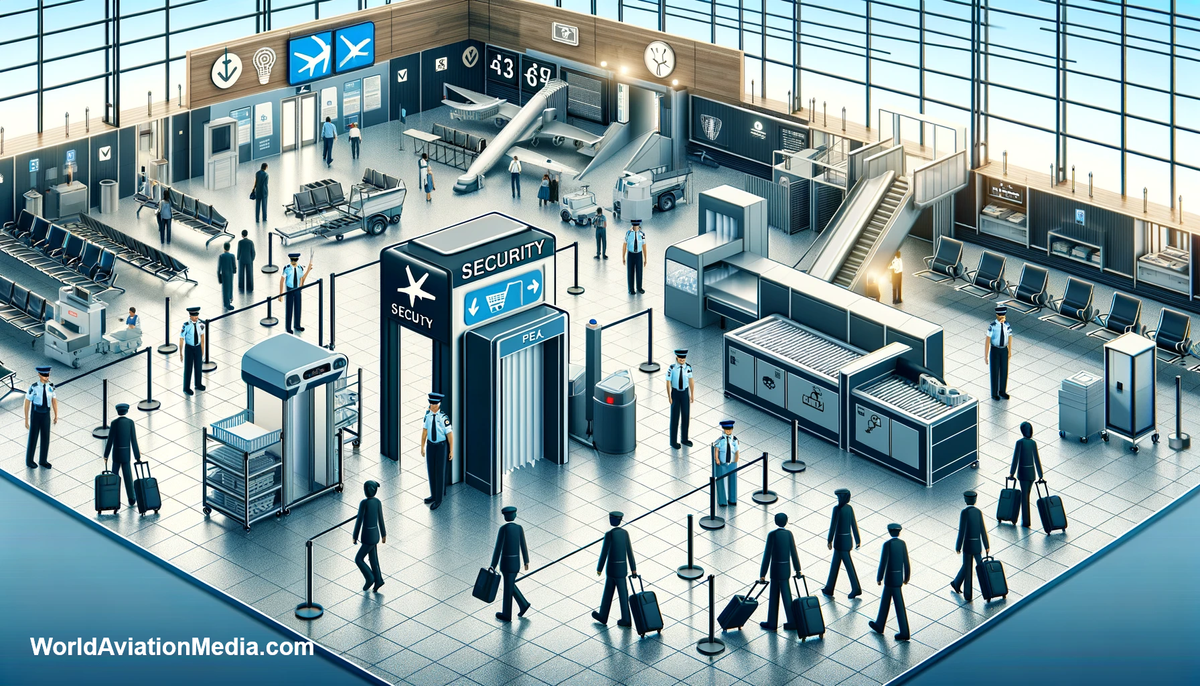Open Architecture for Airport Security Systems: A New Horizon in Aviation Safety
The aviation industry is on the brink of a significant transformation with the introduction of open architecture for airport security systems. This initiative, spearheaded by a collaboration involving ACI Europe, the Transportation Security Administration (TSA), and other partners...


Open Architecture for Airport Security Systems: A New Horizon in Aviation Safety
Key Takeaways:
- Open architecture in airport security systems promotes interoperability and integration of innovative technologies.
- Collaboration between ACI Europe, TSA, and other partners is pivotal for the global standardization of security measures.
- The guidance released aims to streamline security operations and enhance the overall efficiency of global aviation security.
The aviation industry is on the brink of a significant transformation with the introduction of open architecture for airport security systems. This initiative, spearheaded by a collaboration involving ACI Europe, the Transportation Security Administration (TSA), and other partners, is set to revolutionize how airports around the world ensure the safety of passengers and staff. The guidance released on open architecture is a testament to the industry's commitment to adopting interoperable systems and cutting-edge technologies to bolster global aviation security.
The Imperative for Open Architecture in Airport Security
The concept of open architecture in airport security systems is not just a technological upgrade; it's a strategic overhaul designed to address the evolving threats in global aviation. Traditional security systems often operate in silos, with proprietary technologies that limit the ability to share information and integrate new solutions. Open architecture breaks down these barriers, enabling a more cohesive and flexible security infrastructure that can adapt to new challenges and incorporate advancements in security technology seamlessly.
ACI Europe and TSA: Pioneering a Collaborative Approach
ACI Europe and the TSA have taken a leadership role in advocating for open architecture in airport security systems. Their collaboration underscores the importance of a unified approach to aviation security. By bringing together various stakeholders, including airport operators, technology providers, and regulatory bodies, they are laying the groundwork for a standardized security framework that can be adopted worldwide.
Advertising
The Benefits of Interoperable Systems
Interoperability is at the heart of open architecture. It allows different security systems and components to communicate and work together effectively. This not only enhances the capability to detect and respond to threats but also improves the passenger experience by streamlining security processes. Airports can upgrade or replace individual components without the need to overhaul entire systems, leading to cost savings and reduced downtime.
Innovative Technologies in Open Architecture
Innovation is crucial for staying ahead of emerging security threats. Open architecture facilitates the integration of state-of-the-art technologies such as artificial intelligence, biometrics, and advanced screening equipment. These technologies can improve threat detection rates, reduce false alarms, and accelerate the screening process, making security checks less intrusive and more efficient.
Global Aviation Security Enhancement
The ultimate goal of open architecture is to elevate global aviation security. By establishing a common set of standards and protocols, airports around the world can ensure a consistent level of security. This not only protects passengers and aircraft but also fosters trust in the aviation system as a whole. A secure and reliable aviation network is essential for global commerce and the movement of people.

Advertising
Streamlining Security Operations
Open architecture streamlines security operations by enabling a more coordinated approach to threat management. Information sharing becomes more fluid, allowing for real-time responses to security incidents. This collaborative environment also facilitates joint training exercises and shared best practices, further enhancing the effectiveness of airport security personnel.
The Role of Regulatory Bodies
Regulatory bodies play a crucial role in the adoption of open architecture. They are responsible for setting the standards and guidelines that ensure the interoperability and security of these systems. By providing a clear regulatory framework, they can accelerate the adoption of open architecture and ensure that it meets the stringent requirements of aviation security.
The Future of Airport Security Systems
The future of airport security systems is one of flexibility, adaptability, and resilience. As threats to aviation evolve, so too must the systems designed to counter them. Open architecture provides the foundation for a dynamic security environment that can incorporate new technologies and respond to new threats with agility.
Challenges and Considerations
While the benefits of open architecture are clear, there are challenges to its implementation. Concerns over cybersecurity, data privacy, and the cost of transitioning to new systems must be addressed. Stakeholders must work together to mitigate these risks and ensure that the move to open architecture does not compromise the security or privacy of passengers.
Advertising
Summary
The move towards open architecture for airport security systems marks a pivotal shift in the aviation industry's approach to safety and efficiency. By fostering interoperability and innovation, ACI Europe, TSA, and their partners are setting a new standard for global aviation security. This collaborative effort promises to streamline operations, enhance threat detection and response, and provide a more seamless experience for travelers. As the industry continues to face new challenges, the principles of open architecture will be instrumental in ensuring that airport security systems remain robust and adaptable for the future.


